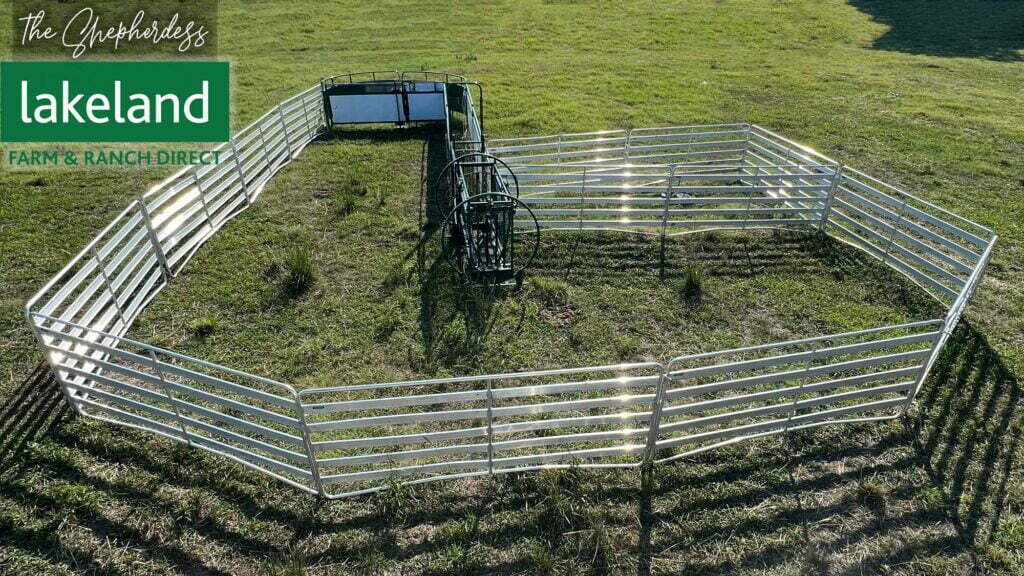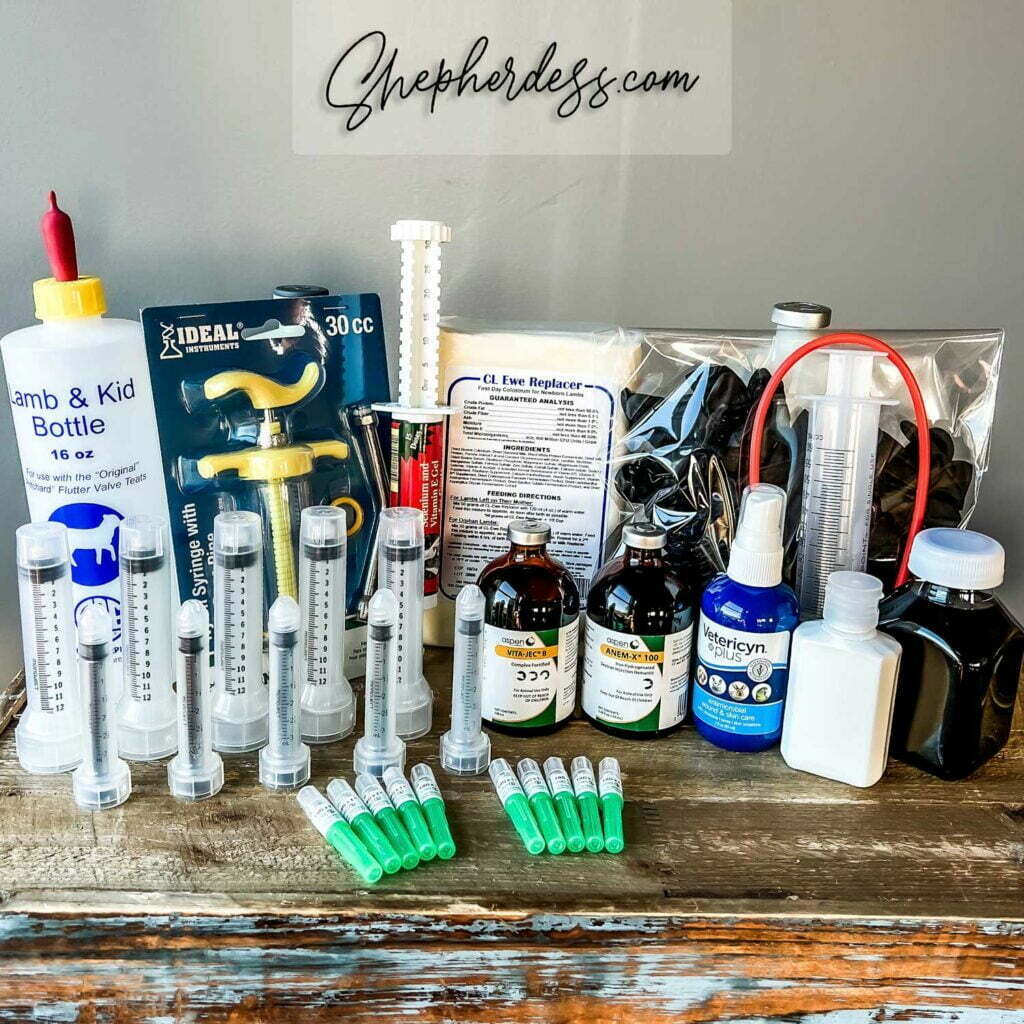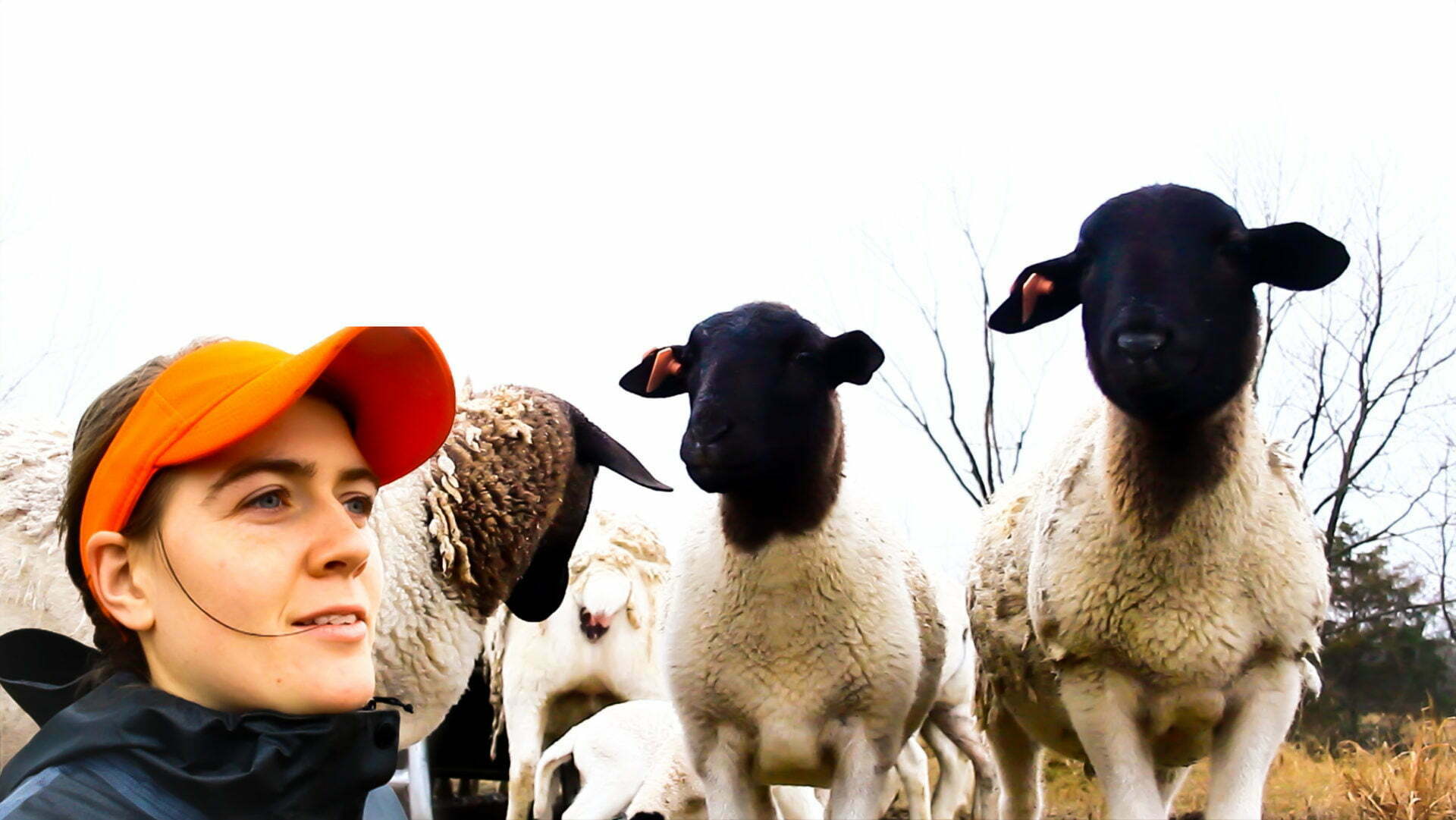I am going to show you what kind of products I use in my Dorper Sheep flock with detailed info why I use them.
I am going to address how the new regulations on livestock antibiotics affect my sheep farm.
I am going to talk about how I keep records on my sheep flock.
I am going to talk about handling systems for sheep.
Where to find the products I am using:
With exception of the prescription only products, all of the products I use to work my flock are part of the Shepherdess Complete Starter Kit at Shepherdess.com.
What you will also find at Shepherdess.com is a HUGE amount of free training for beginner sheep farmers, in fact I would highly recommend you start with my free 1 hour class on the basics of raising, grazing, and marketing sheep.
Every 30-45 days I will give the flock what I call a “quick look”. I’ll check eyelids for anemia and, if someone is limping, I’ll figure out why. This typically takes an hour or less and I will just pile them all into the nearest small or use some of the portable Lakeland panels to create small enclosure wherever the flock is grazing.
Today, however, was one of my biggest working days of the year, which only happens 2-3 times per year. I performed about 7 different tasks… and those tasks are as follows.
Tasks I Performed Today!
- CDT: Vaccine (vet only). CDT is a vaccine for sheep and goats that you can purchase through your vet. It guards against tetanus and overeating disease (bloat). I avoid giving the shots to the meat wethers that I raise, but prioritize them for my breeding animals. The two issues they guard against are ones you will likely encounter if you are grazing. Clover dense pasture can cause bloat and tetanus is a risk where rusty fencing, or horse manure is present. (yes, horse manure carries tetanus)
- Cydectin: Dewormer for Barber’s Pole Worm. I treat the Barber’s Pole Worm with Cydectin.
- Toltrazuril: Dewormer for Coccidia. I use Toltazuril as Coccidia prevention and treatment. Coccidia is another parasite that eats holes in the gut of your lambs and can stunt growth. For the most part rotational grazing and culling has taken care of this problem in my flock, but I don’t mind running the occasional treatment, especially if it has been a really wet month. Symptoms include a pot belly, slowed growth rate, and/or persistent diarrhea. This treatment works really quickly. Lambs under 8 months are most vulnerable. This coccidia treatment is available in the Shepherdess Essentials Bundle!
- Vitamin B and Anem-x 100 Iron Supplement: Immune Boosters for Stress. These two supplements are something I’ll give to mature ewes that seem stressed. As an example of why I used it here: 3 of my ewe were stressed and/or in poor body condition from lambing In December and raising lambs in sub-optimal conditions. These two supplements and the needles you need to administer are available in the Shepherdess Essentials Bundle!
- Ear-tagging: New lambs and moms that have lost there eartags throughout the year will receive a fresh orange tag. You need 3 things to eartag: A non-fading eartag marker, an eartag applicator, and of course the tags. You want to make sure the tags are small for sheep. These eartags are not in the Essentials bundle, but are available separately at shepherdess.com For the new lambs I will put the name of their sire (dad) on the back as well as their dams (moms) number. The fact that I can look at a lamb and know which mom it belongs to betrays the fact that I spend way too much time with my sheep. Another way to keep record on moms and babies is simply to eartag on pasture shortly after the lamb is born.
- Roll Call: With the help of my mini-shepherdess I ran a roll call on the entire flock. My flock is not huge, but it is growing and with them spending a majority of time on pasture, I wanted to make sure no-one had escaped the farm, or was abducted. Thankfully everyone was present, accounted for and looking great!
- Weighing: I weighed a cross-section of the flock to get an idea of where everyone was at, and to keep tabs on some of the ewes that had lost condition due to lambing in December. The scale I am using is also from Lakeland.
- Tail Docking and Castration: The same tool is used for both tail docking and castration. You have the castration pliers and a small rubber band. You just have to stick different parts through this rubber band and leave it there.
How do the new regulations on Livestock Antibiotics affect my farm?
They don’t. I use antibiotic maybe 3-4 times per year. I have a relationship with my vet, so will buy a bottle when I buy my CDT. It stores it in the fridge and keeps for the whole year. I’m sad that there are more regulations in place, but this one is not affecting me too severely.
Handling System:

What I actually use to do the bulk of my sheep work is a Lakeland Farm and Ranch handling system, which I love. It takes the muscle out of working sheep and is allowing me to grow my flock as a single female owner/operator who is 5’3′ with sheep that outweigh her. When I did not have this sheep handing system, I needed 2 big guys to help me on days like today. With this system, I can work the flock by myself with the help of two little girls who I can pay in cheeseburgers and cherry limeades rather than $20 per hour.
When our flock was smaller, we would just use a small pen and a homemade chute, which I will link below to that DIY chute. Just make sure it is a small pen and the sheep are tightly packed together. Do not leave any room for them to run from you… or it will be a very long day.
Simple Record Keeping for the Flock:
I use a simple Google Sheets to keep tabs on the flock. I create a column for each year and file the ewes according to the year they were born. Our flock goes back to 2017, so I have 7 columns.
On that Google Sheets I will create new tab down below for huge working days like today. I have a 10 year old secretary on site to write down notes for each ewe with respect to what kind of treatment she received, how much she weighed, etc. Once we are done, I will take that piece of paper and add notes to my Google sheets for each animal. I do know there are services that help with flock record keeping, I just have not taken the time to jump into any of them yet… maybe someday!
We are almost finished with lambing, and I actually timed my lambing to be earlier this year. I did this for several reasons, but one of them was so that I could do this kind of flock maintenance in cooler weather. It is really uncomfortable to work sheep when the Texas temperatures kick up in may.
I hope this walk through a day of working sheep helped you!
-the Shepherdess
“Know ye that the LORD he is God: it is he that hath made us, and not we ourselves; we are his people, and the sheep of his pasture.” Psalm 100:3


I have used Colloidal silver for livestock, it works very well on injuries and infections. Ive used it for fish, cats, dogs, and myself.
Good stuff if you cant get other treatments.
It costs a bit, so I bought a silver generator and it takes half an hour to make. That way i can have a big spay bottle full of it., and back up bottles under the cupboard.
Jake
Do you wean your lambs and if so, when? How often do you deworm? Thanks, tom
If I have enough grass to keep the mom in good shape, I will leave the replacement ewe lambs to self wean.
Ram lambs and ewes lambs I intend to sell I’ll wean onto alfalfa hay at 14 weeks.
Deworming: I inspect every month. At these inspections I’ll probably dose 1/4-1/3 of the ones I inspect. If it’s been super rainy it’s more like 1/2-3/4.
At what age do you band tails? How long does it take it to fall off?
At what age do you castrate?
2-3 weeks is the ideal age for both, however I have done it when the lambs are older. It takes up to 3 weeks to fall off 🙂